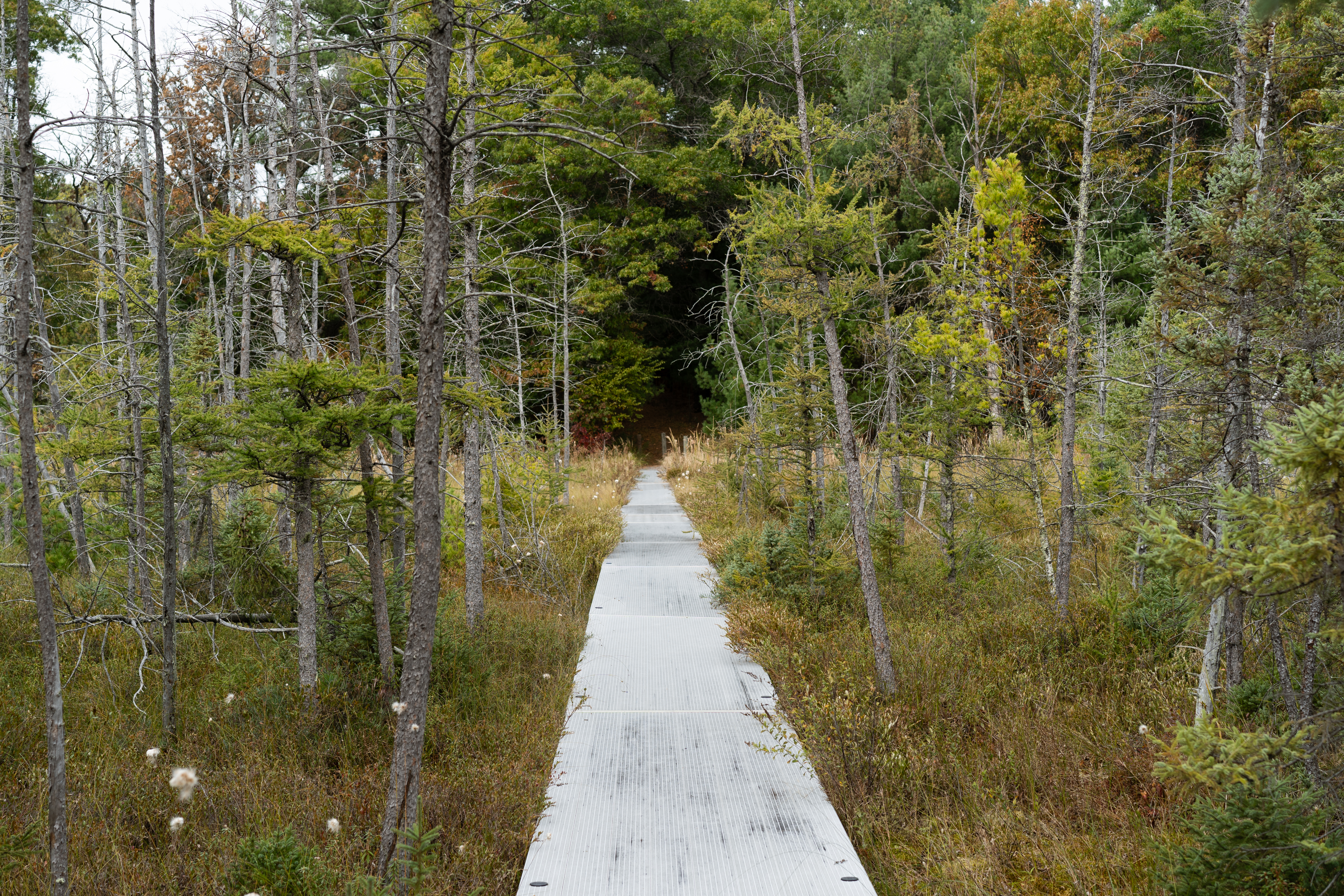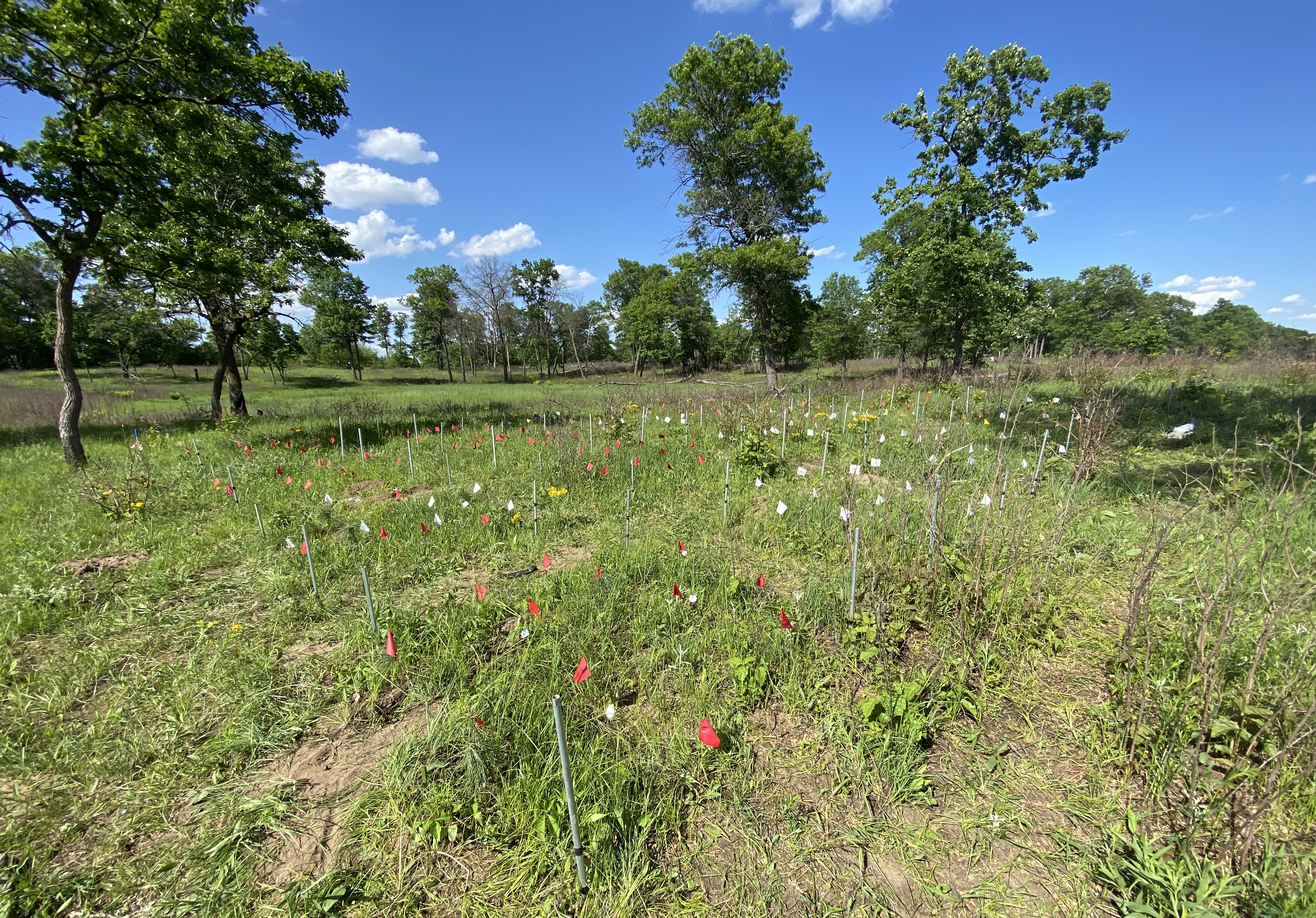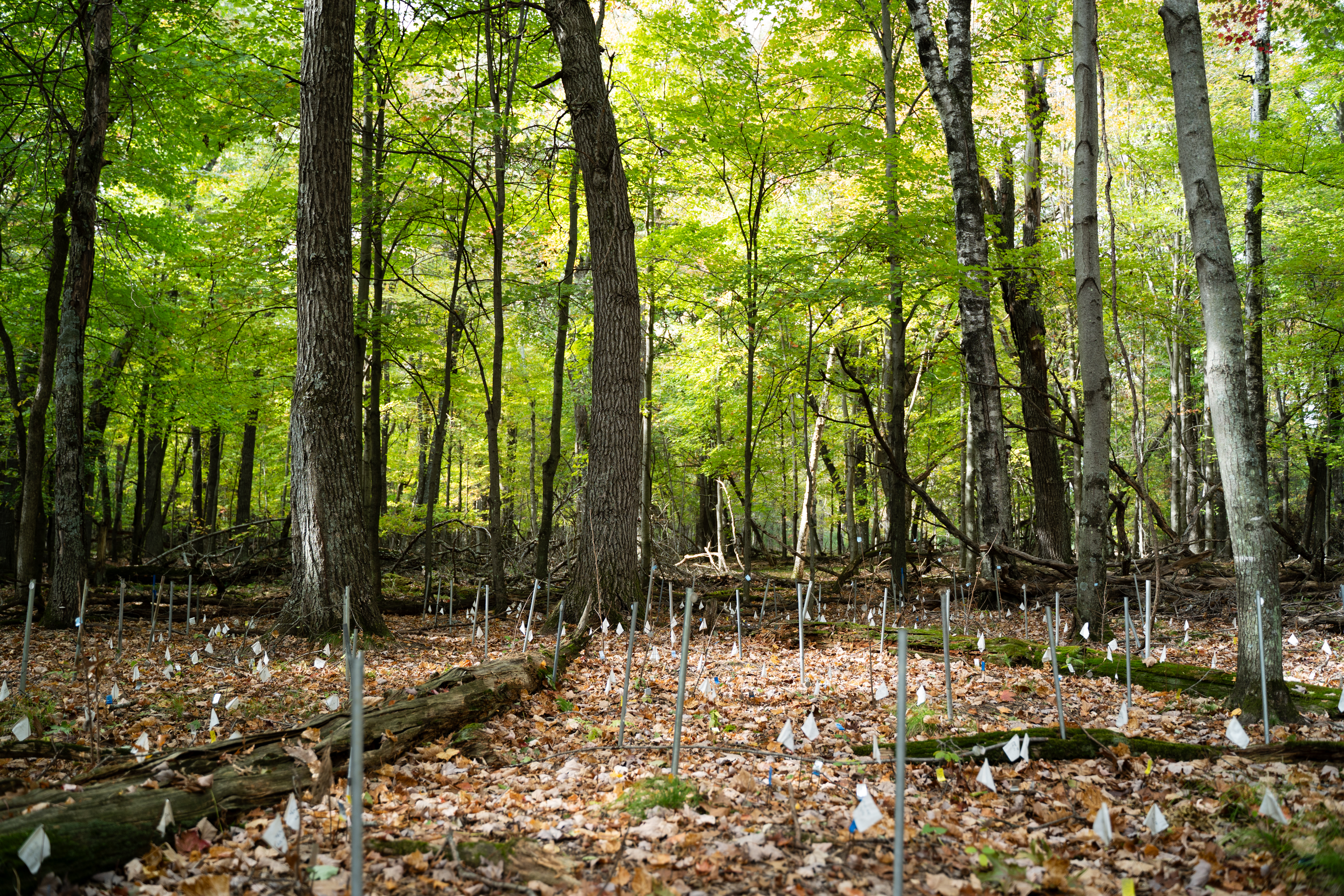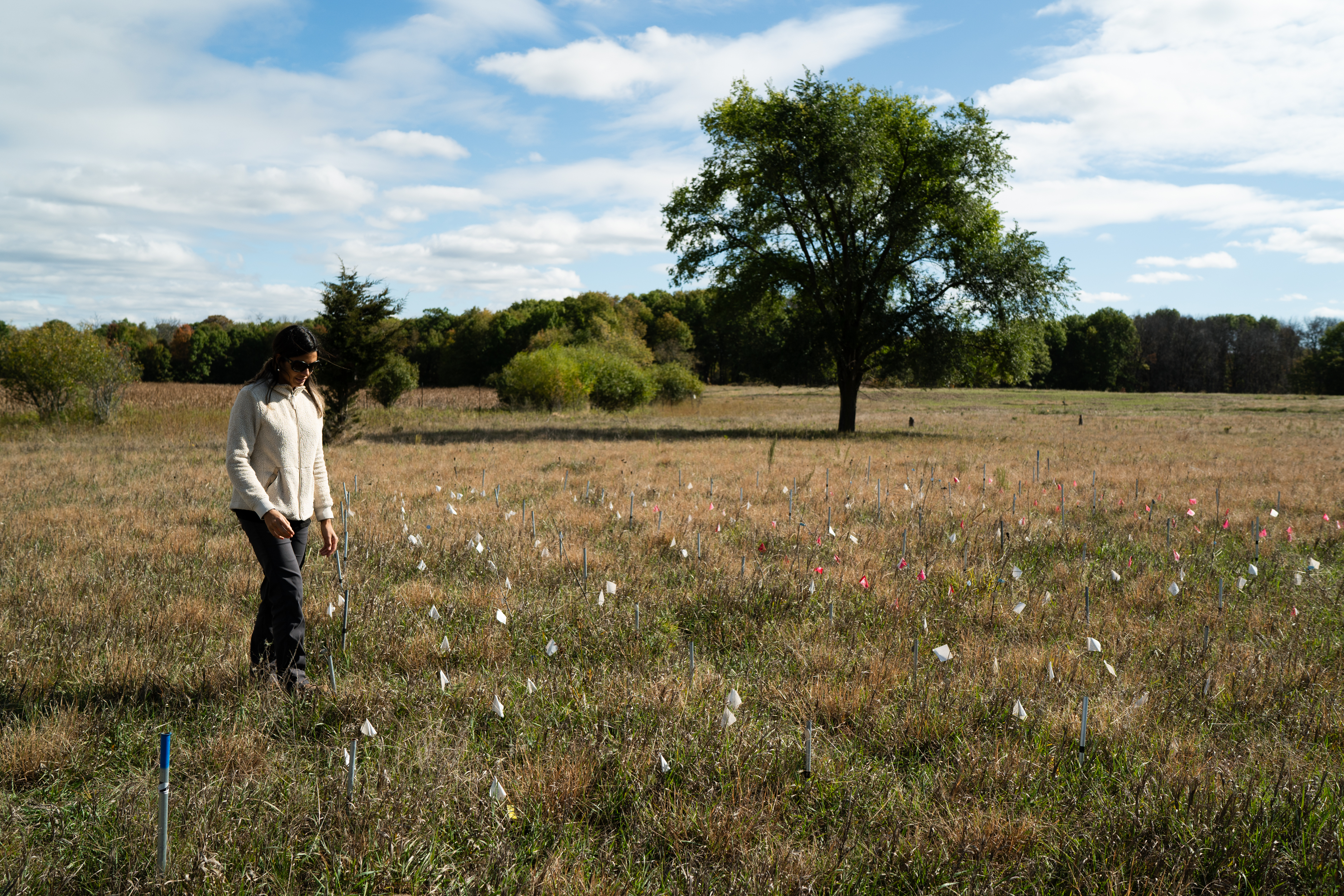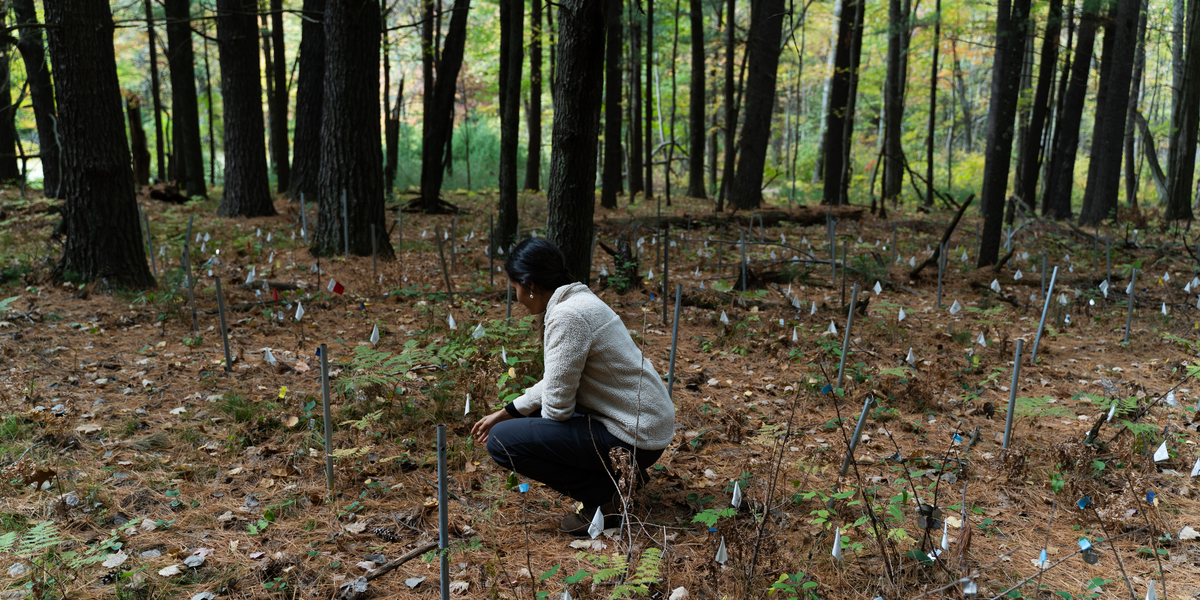
A birds-eye view of Cedar Creek Ecosystem Science Reserve reveals a stunning ecological tapestry. The landscape spans from savannas, bogs and grasslands to a patchwork of forest types. Many ecologists find their niche investigating these individual ecosystems. Few get to study the spectrum of life across several ecosystems at once. Enter: Dr. Karen Castillioni.
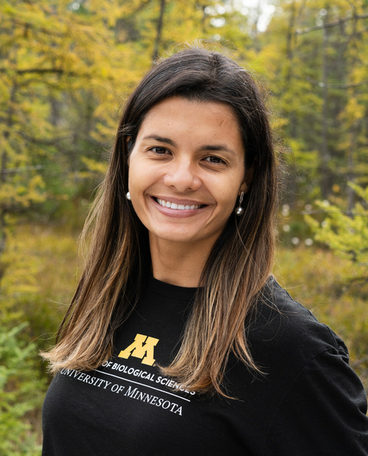
“As you navigate across these different ecosystems, you see conditions that are better for each species to grow,” says Castillioni, a postdoctoral researcher in Forest Isbell’s Biodiversity Lab at the College of Biological Sciences. “There are different factors driving what species are there [in each ecosystem], and how much there is of that species.”
Take Beckman Bog, where pitcher plants glisten with a carnivorous brine and fungi fruit in lacy frames of moss. Relative to other species at the bog (or “fen”, if you’re being accurate), tamaracks take the cake for most prolific–these iconic conifers thrive in beds of standing water and sphagnum. But transplant a tamarack seedling in a nearby prairie? The seedlings soon become shriveled twigs.
Castillioni is exploring these large-scale ecosystem dynamics in a recently established experiment at Cedar Creek that spans 5 different habitats: bog, coniferous forest, deciduous forest, grassland and savanna. At each site, seedlings representing dominant species of each habitat (tamarack, white pine, red maple, big bluestem and bur oak –respectively) were transplanted into plots of every combination you can think of. Total transplants: 1,200.
“[Our experiment was set up to examine] beta diversity and its effects on ecosystem productivity, which is often measured as the rate of biomass amount that's produced by plants.”
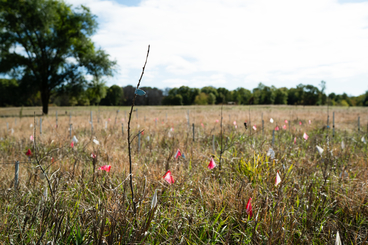
Beta diversity places value on species unique only to their ecosystems or communities. For example, if tamaracks grow abundantly in the bog, but perish elsewhere, they would contribute to the bog’s beta diversity. It seems inevitable that tamarack would produce more biomass grown in its ideal environment. More biomass means more carbon storage. More food for animals and for people. More roots holding essential water stores in place.
But according to Castillioni’s most recent publication, some transplants in Castillioni’s experiment could fare better than others–at least, initially. Deeper questions conceptualized in Castillioni’s research could depict what factors drive changes in plant success and ecosystem functioning over time.
Why might a red maple seedling slowly perish in a coniferous forest? Because of soil composition or soil temperature? Could it be gradually outcompeted by other species?
“We established this experiment from seedlings. Plant establishment can be very hard for plants, because they have to be able to survive as seedlings in a new environment. We are trying to track if they can establish and become adults. And then, in the long term, from there, we can start measuring things like productivity, things like how much biomass the trees and grasses produce over time as they occupy different ecosystems in the landscape.”
—Adara Taylor
